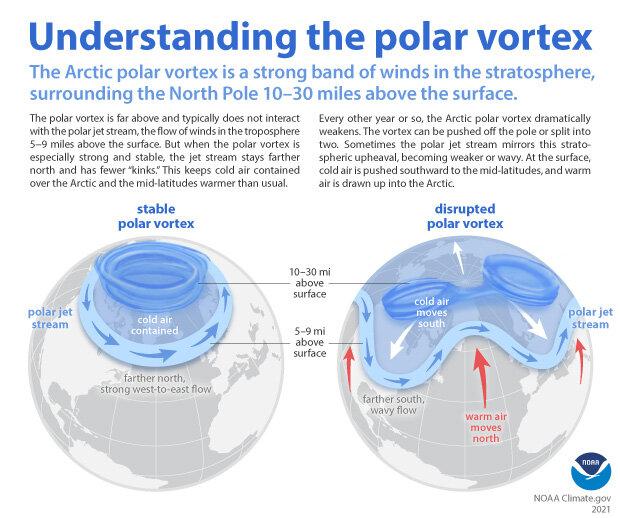
2 This microstole repeats strength and weakness every few or several decades, which is called arctic oscillation.
3Not all cold waves are explained only by Arctic vibrations, but the weather changes to extremes when Arctic vibrations occur.
4 If the polar vortex is usually stable = When the temperature of the Arctic is low, it is separated from the jet stream of the troposphere surrounding the polar region, and the jet stream tightly blocks the gap between the high-level cold air and the mid-level warm air, which is called positive vibration.
5 However, if the Arctic warms, the microdolls become unstable, which in this case causes negative vibrations.
6 Then, as shown on the right side of the figure, the jet stream becomes loose and fluctuates, resulting in high-level cold air moving south to the mid-degree.
7 Last year, the terrifying cold wave in the U.S. continent was largely suspected of being caused by negative Arctic vibrations, and the cold wave that hit East Asia this time was also caused by the loosening of Arctic jet currents due to Arctic warming.
Perm
